Greek Food Dishes: Basic Overview
Common Ingredients
Common Cooking Methods
Courses
Meals
Key Taste
Eating Etiquette
Meal Presentation
Culinary Festivals
Influence and Fusion
Popular Types of Greek Dishes
-
Casseroles and Bakes
Greek casseroles and bakes normally feature layers of vegetables like eggplant and potatoes, meats such as lamb or beef, and creamy sauces.
Once assembled, these dishes are baked until the ingredients meld into a blend of flavors and texture.
The top commonly turns golden and slightly crisp.
-
Salads
Greek salads are fresh, vibrant, and known for their simplicity.
Common ingredients are fresh tomatoes, cucumbers, onions, and olives, typically topped with feta cheese.
Dressings are usually a simple mix of olive oil, vinegar, and herbs.
They are perfect foods for vegetarian meals.
-
Soups
Greek soups range from light to rich.
They often incorporate vegetables, legumes, grains, and meats, seasoned with a variety of herbs and sometimes thickened with other components.
Some are suitable for vegetarians.
-
Desserts
Greek desserts’ common ingredients include honey, nuts, phyllo pastry, and fresh fruits.
The use of spices such as cinnamon and cloves adds depth and warmth.
-
Vegetarian Dishes
Greek cuisine is famous for multiple vegetarian dishes, making use of the abundant fresh vegetables, legumes, and grains available in the region.
These dishes are seasoned with olive oil and Mediterranean herbs.
Greek dishes are renowned for their rich flavors and nutritional balance. Greek cuisine bears the influence of its geography and history, with noticeable elements from Italian, Balkan, and Middle Eastern cuisines. They also feature the principles of the Mediterranean diet.
Thanks to the diverse source of fresh produce, common ingredients in Greek delights include fresh vegetables (e.g., tomatoes, onions, cucumbers, green peppers), legumes, grains, herbs, and olive oil, which is used in most dishes for frying or as a dressing.
Cheese, particularly feta, is a key component in many recipes, known for its tangy taste and crumbly texture.
Meats like lamb, pork, and chicken are commonly used, often grilled or baked. Seafood (e.g., fresh fish, octopus, and squid.) is also prominent, thanks to Greece’s extensive coastline.
With this reading, you can get a closer look at traditional Greek food and its key characteristics. I’ll explore why it’s celebrated globally and discuss its beneficial health attributes.
The social aspect of eating is central, with meals often shared family-style, accompanied by wine. Besides wine, there are other ideal beverages to go with Greek delights, which I’ll also show you later.
First, let’s explore the 31 most popular delicacies in Greece.
31 Most Popular Greek Dishes with Filters
Explore the best 31 dishes that define Greek cuisine with me! You can use the filter to sort through this list by various criteria, like main ingredients, taste, cooking methods, dish types, courses, and their popularity.
This section also allows you to delve into a range from traditional staples and national treasures to unique finds and popular street food.
Representing the pride of Greek culinary tradition, these dishes use local ingredients and are a mainstay in celebrations and daily life.
Passed down through generations, these recipes vary across different regions.
Moussaka
- National
- Traditional
Moussaka is a favorite layered casserole in Greece. It’s traditionally made with slices of eggplant and/or potatoes, a spiced meat filling (often ground lamb or beef mixed with tomatoes, onions, garlic, and cinnamon), and topped with a creamy béchamel sauce.
According to the Greek people, Arabs made this beautiful recipe first. Until the 13th century, a recipe believed to be the origin of this dish appeared in the Arabic cookbook. Greek chef Nikolas Tselements created the favorite version of moussaka in 1910.
Souvlaki
- National
- Street Food
- Traditional
In Greece, souvlaki refers to small pieces of meat (commonly pork, chicken, lamb, or beef) that are marinated in a mixture of olive oil, lemon juice, and Greek herbs like oregano.
The meat is then threaded onto skewers and grilled. Souvlaki is often served wrapped in a flatbread with toppings such as tomatoes, onions, and tzatziki sauce.
Its name “Souvlaki” comes from the Greek word “souvla”, which means “skewer” or “spit”. The ancient Greeks were the first to make this amazing food, and they called it “Obeliskos”.
Gyros
- National
- Street Food
- Traditional
Gyros is a convenient and delicious Greek street food for you. It’s made with meat cooked on a vertical rotisserie, typically pork, chicken, or lamb.
The cooked meat is then shaved off and served in a pita wrap with various accompaniments like tomatoes, onions, fries, and a generous dollop of tzatziki sauce.
If you want a Gyros for the fasting season, you can choose its vegetarian version.
Tzatziki
- Traditional
Tzatziki is a refreshing yogurt-based sauce or dip used in many Greek meals. It’s made with strained yogurt, cucumbers, garlic, olive oil, and herbs (usually dill or mint).
Tzatziki is commonly served with grilled meats, as a dip for bread or vegetables, or as a spread in wraps and sandwiches.
The name “Tzatziki” comes from the Persian word “Zhaza”, which means “herb mixture”.
Spanakopita
- Traditional
Spanakopita is one of the most famous pies in Greece. It’s a savory spinach pie made with flaky phyllo pastry layers, filled with a mixture of spinach, feta cheese, onions, egg, and seasoning.
Moreover, you can choose from a version of spanakopita with sweet or savory fillings according to your preference.
Since it doesn’t include meat, Spanakopita is a common food choice during religious celebrations. It can be served as a main dish or cut into smaller squares for an appetizer.
Greek Salad
- National
- Traditional
Greek salad (also known as horiatiki) is a fresh and vibrant salad made with tomatoes, cucumbers, red onions, green bell pepper, Kalamata olives, and feta cheese.
It’s dressed simply with olive oil, and red wine vinegar, and also seasoned with salt, pepper, and dried oregano. Unlike many salads, it typically doesn’t include lettuce.
Magiritsa
- National
- Traditional
Magiritsa is a well-loved Greek soup primarily served to break the fast of the Great Lent on Holy Saturday, just before Easter Sunday.
This rich soup is made with lamb offal (such as liver, lungs, heart, and intestines), spring onions, and dill, and thickened with avgolemono, which is made from eggs and lemon juice.
Fasolada
- National
- Traditional
Often referred to as the national food of Greece, fasolada is a hearty and comforting bean soup.
It’s made with white beans, olive oil, and vegetables such as carrots, celery, and onion, and is seasoned with bay leaves and sometimes tomato.
This soup is a beloved treat during the cooler months.
Baklava
- Traditional
When it comes to Greek desserts, Baklava is the most commonly known name. Baklava is a sweet pastry made of layers of filo (a very thin unleavened dough), filled with chopped nuts (commonly walnuts, pistachios, or almonds).
The ingredients used for this food will vary by region. In the Central, the almond is the key element. However, it was replaced by walnuts and pistachios in the East and North.
The layers of dough are baked until crisp and golden and then soaked in the sweet syrup. The syrup sometimes features orange or lemon zest for extra flavor.
In the 13th century, the first record of Baklava appeared in a Persian cookbook. Today, it’s a dessert of Ottoman cuisine.
Dolmadakia
- Traditional
Dolmadakia, aka dolmades, are favorite grape leaves stuffed in Greece. The filling usually consists of rice, pine nuts, and various herbs such as dill, mint, and parsley.
They can be served warm or cold and with lemon or a yogurt-based sauce. While there are many variations, including some with meat, the vegetarian version is quite common in Greek cuisine.
Tiropita
- Traditional
Tiropita or “cheese pie” is a Greek pastry made with layers of buttered phyllo and filled with a cheese-egg mixture.
Feta cheese is most commonly used, but other cheeses can also be included. It’s a popular snack or appetizer and can be made in various shapes, including a large pie cut into individual portions or individual small triangles.
You will be immersed in the crunchiness of the outside and the softness of the inside.
Pastitsio
- Traditional
Pastitsio is a Greek baked pasta dish that includes layers of macaroni, cheese, and a flavorful ground beef sauce, topped with a creamy béchamel sauce and then baked until golden brown.
Overall, it’s often described as a Greek version of lasagna, though it has its unique characteristics and flavor profile.
This wonderful dish originated in Italy and became widely known as Pasticcio di Maccheroni in the 16th century.
Saganaki
- Street Food
- Traditional
Saganaki refers to various Greek dishes prepared in a small frying pan, which is also called a ‘saganaki.’
The most well-known version is the appetizer of fried cheese, typically made with firm, flavorful cheeses like kefalograviera, kasseri, or halloumi. The cheese is pan-fried.
It has a beautifully crisp and golden color on the outside and melty inside. Fried cheese saganaki is commonly served with a squeeze of lemon juice and sometimes with a side of bread or pita.
Kleftiko
- Traditional
Kleftiko is a traditional Greek slow-cooked dish, usually made with lamb. The lamb is marinated in garlic, lemon, and herbs and then wrapped and sealed in parchment paper or foil to retain all the flavors and juices.
The meat is then slow-cooked until the meat is tender and falls off the bone. For serving, potatoes and vegetables that have been cooked in the same juices are ideal.
The name translates to “bandit’s meal,” reflecting its historical origins.
Loukoumades
- Street Food
- Traditional
Loukoumades are small, sweet honey puffs, often described as Greek doughnuts. The golden balls will attract you with a crispy outside covered in sweet syrup and spongy flesh.
They are typically sprinkled with cinnamon and sometimes garnished with chopped nuts.
These sweet puffs are a popular dessert or snack, especially at festivals and celebrations.
It was the oldest Greek dessert when these deep-fried balls were eaten by the victors of the first Olympic Games in 776 BC.
Stifado
- Traditional
Stifado is a famous stew of Greek cuisine. It’s typically made with beef or rabbit, small onions, tomato sauce, red wine, and a blend of spices, including cinnamon, cloves, and bay leaves. It is excellent to have rice, egg pasta, or potato chips with this food.
After Constantinople perished in the 13th century because of the Ottoman invasion, the Venetians brought this unique dish to Greece. The Greeks brought their characteristics to the food when turning it into a warm and hearty dish.
Avgolemono
- Traditional
Avgolemono is a classic Greek soup featuring two main ingredients: “avgo” (egg) and “lemono” (lemon).
The soup is made with chicken broth, rice (or orzo), and then thickened with a mixture of eggs and lemon juice. So Avgolemono is known for its creamy texture and tangy flavor.
Locals often enjoy it during cooler weather or when someone needs a comforting meal.
Kolokithokeftedes
- Traditional
Kolokithokeftedes are Greek zucchini fritters, combining grated zucchini with herbs like mint or dill, feta cheese, and sometimes other vegetables.
The mixture is formed into small patties and then fried, making them an ideal appetizer or a meze. They often come with yogurt or tzatziki dip.
Keftedes
- Street Food
- Traditional
Keftedes are traditional Greek meatballs typically made from ground meat, often a mix of beef and pork (or sometimes lamb), grated onion, garlic, and soaked bread or breadcrumbs.
The seasonings used in keftedes are a mixture of fresh herbs like mint, parsley, and oregano, along with salt and pepper, giving them a Mediterranean flavor.
The mixture is shaped into small, flat patties or balls and then either fried or baked. Keftedes are often served with tzatziki sauce or a simple squeeze of lemon.
Keftedes are the perfect main dish, appetizer, or as part of a larger meze platter.
Soutzoukakia
- Traditional
Soutzoukakia refers to oblong Greek meatballs seasoned with cumin, cinnamon, and garlic. The meat is usually a ground mix of beef or a combination of beef and pork, bread crumbs, and a bit of red wine.
After forming them into balls, they are either fried or baked and then simmered in a tomato sauce. Soutzoukakia is often served with rice or mashed potatoes.
You can serve these meatballs as a main dish or as a mezze platter. They are also ideal treats to celebrate special occasions.
Eggplant Papoutsaki
- Traditional
Eggplant papoutsaki is a delicious stuffed eggplant dish of Greek cuisine. The eggplants are halved and hollowed out, then filled with a savory mixture of minced meat (often beef or lamb), tomatoes, onions, and various herbs.
The filled eggplants are then topped with béchamel sauce and cheese and baked until tender
Its name has its origin from the Persian word “paposh”, which means “little shoes”, resembling the appearance of this delight.
Briam
- Traditional
Briam is a hearty Greek roasted vegetable dish. It typically includes a mix of summer vegetables like eggplants, zucchini, potatoes, onions, and bell peppers, all sliced and layered with tomatoes and olive oil.
Therefore, it’s akin to the French ratatouille. Briam is a baked treat, often served as a side or a main vegetarian dish.
Taramosalata
- Traditional
Taramosalata is a creamy and savory dip made from tarama, the salted and cured roe of cod or carp.
The roe is blended with bread crumbs or boiled potatoes, lemon juice, olive oil, and sometimes onions, resulting in a smooth paste.
It’s an ideal food as a meze, accompanied by bread or raw vegetables for dipping.
Bouyiourdi
- Traditional
Bouyiourdi is a spicy baked feta cheese dish. Feta cheese is combined with tomatoes, green peppers, red onions, and hot peppers, then seasoned with oregano and drenched in olive oil.
The mixture is baked until the cheese is soft and spreadable. Locals normally eat bouyiourdi with fresh bread as an appetizer or side dish.
Calamari
- Street Food
- Traditional
Calamari refers to squid, which is prepared in various ways in Greek cuisine.
It’s most commonly battered and deep-fried. So if you crave a crispy and golden-brown exterior with tender meat inside, calamari is a good choice.
These seafood treats are often served with lemon and a dipping sauce like tzatziki.
Rizogalo
- Traditional
Rizogalo is a Greek-style rice pudding made by slowly cooking rice with milk, sugar, and sometimes lemon zest, until creamy and thick.
Cinnamon is often sprinkled on top just before serving. Rizogalo is a popular dessert and can be enjoyed either warm or cold.
It’s a versatile dish as it can also be a sweet breakfast or a great afternoon snack.
Kourabiedes
- Traditional
You will love the aroma and richness of these Kourabiedes.
When you travel to Greece around Christmas, this is the time when Kourabiedes are in vogue. They are delicate, butter-based cookies dusted with powdered sugar.
These cookies are made with flour, butter, and almonds, and are known for their crumbly texture and buttery taste. After baking, they are typically coated in or dusted with a generous amount of powdered sugar, resembling snowy mountains.
Its name comes from the Turkish word “kurabuye”, which means “double-baked”.
Kreatopita
- Traditional
Kreatopita is a savory Greek pie made with phyllo pastry and a filling of seasoned meat, usually lamb or beef, combined with cheese, onions, and sometimes spinach or other greens.
All ingredients are wrapped in layers of thin, crispy phyllo dough and baked until golden brown. Kreatopita is a common main dish, especially during festive occasions.
Fava
- Traditional
Fava, in Greek cuisine, refers to a dish made primarily from yellow split peas. The main ingredient, yellow split peas, is known locally as “fava.”
Greek fava is made by simmering yellow split peas with onions and garlic until soft, then blending them into a creamy puree enriched with olive oil. It’s seasoned with salt and pepper and often garnished with onions, capers, olives, fresh herbs, and a splash of lemon juice.
It’s enjoyed as an appetizer, spread, or dip and is part of the Greek meze tradition, served alongside other small dishes. This recipe is particularly famous on the island of Santorini but is enjoyed all over Greece.
Melomakarona
- Traditional
Melomakarona is a traditional Greek Christmas cookie, made of flour, olive oil, and honey, and often flavored with orange zest and spices like cinnamon and cloves.
The sweetness of the cake comes from the syrup coating on the outside. Melomakarona are moist, intensely flavored, and typically sprinkled with chopped walnuts before serving.
In Greek, its name means honey.
Gemista
- Traditional
Gemista is a baked Greek dish consisting of vegetables, normally tomatoes and bell peppers, that are hollowed out and stuffed with a flavorful rice mixture.
The rice is often seasoned with herbs like parsley and mint and can include pine nuts or raisins.
Its name is inspired by the word “gemizo,” which means stuffed.
How To Pair Greek Dishes with Beverages?
Below are some typical Greek drinks that can complement delights.
These pairings emphasize the harmonious balance between the rich, varied flavors of Greece’s traditional beverages and dishes.
So, have you tried any of the above delights? If not, I hope you will have a chance to taste all the quintessence of this Greek cuisine. Let me know how you feel about them and other fantastic Greek foods in the comments.



















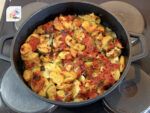





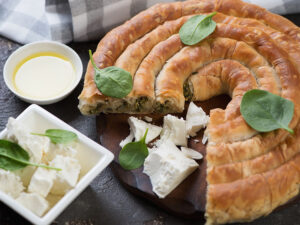



















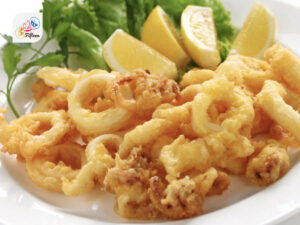


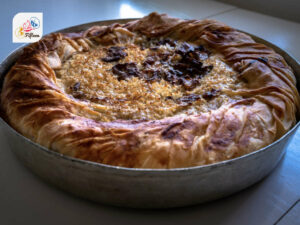
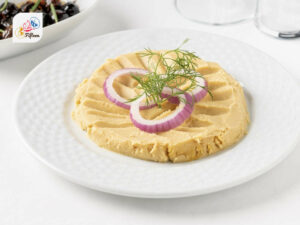



Jamie Scott
Editor in Chief, Senior Content Writer
Expertise
Home Cooking, Meal Planning, Recipe Development, Baking and Pastry, Food Editor, Cooking-video Maker, Western Food Evaluation Expert
Education
Le Cordon Bleu College of Culinary Arts
Local Community College, New York, NY
Jamie Scott is a skilled culinary expert and content creator specializing in Western cuisine. With over 15 years in the culinary field and formal training from Le Cordon Bleu, Paris, Jamie deeply understands how to blend nutrition with delicious flavors. His passion for cooking matches his commitment to making healthy eating accessible and enjoyable.
On Fifteen.net, Jamie brings a fresh perspective to classic dishes and beverages, offering readers insightful recipes, cooking tips, and a fresh view on meal planning that emphasizes taste, health, and simplicity.